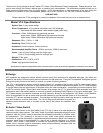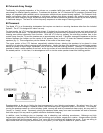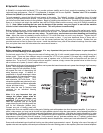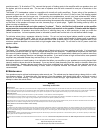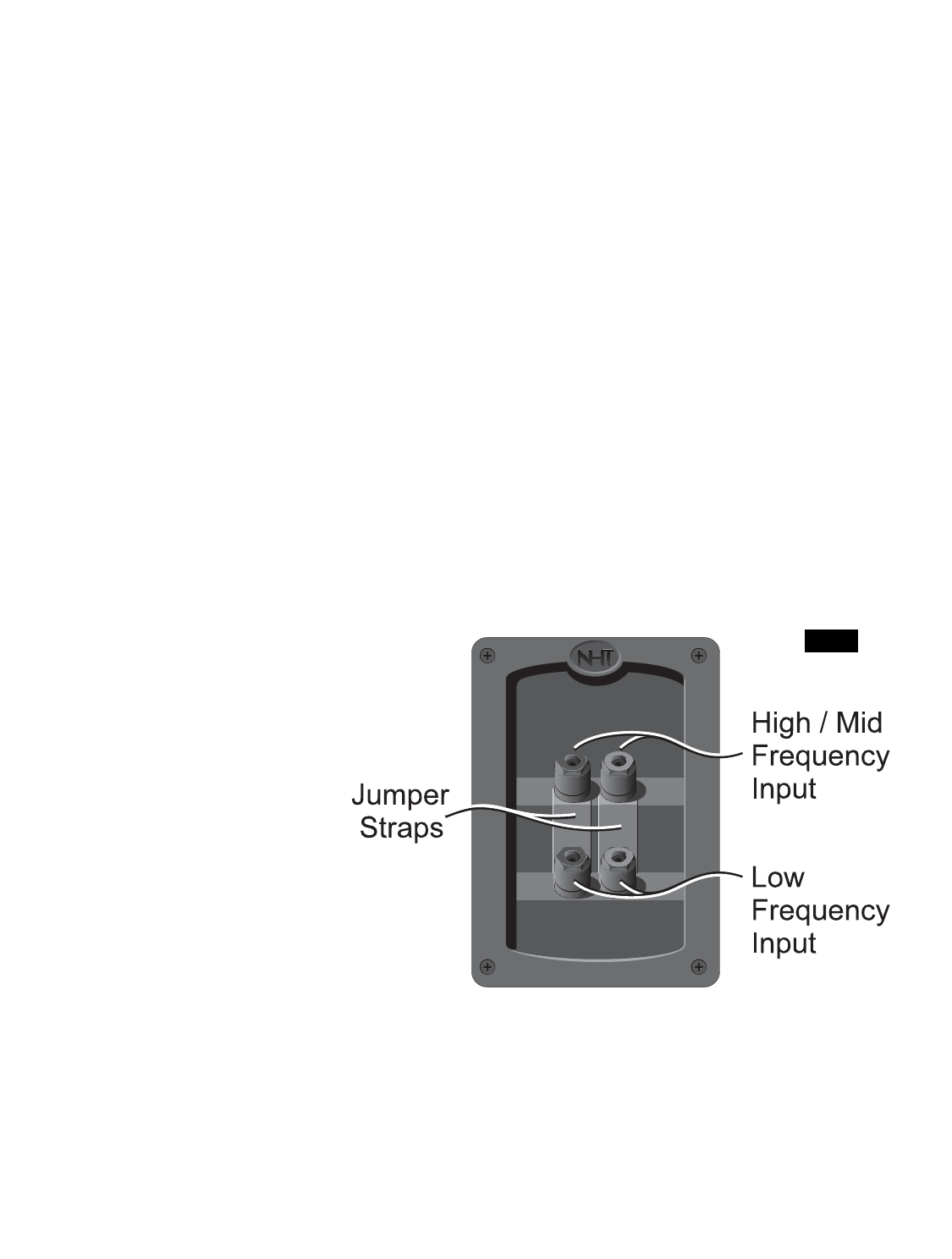
SpikeKit Installation
A SpikeKit is included with the Model VT-2 to provide optimum stability and to firmly couple the speakers to the floor for
improved bass performance. Each VT-2 loudspeaker is shipped with its own SpikeKit. Caution: the VT-2 is unstable
without the SpikeKit (or at least the stabilizer bars) installed.
To begin assembly, unpack the SpikeKit and inspect all the parts. The SpikeKit includes: (2) stabilizer bars, (4) metal
cones, (4) Phillips head machine screws, (4) lock nuts and (4) rubber feet. We recommend installing the cones only after
you have found the ideal location for the speakers. Begin by installing the stabilizer bars. Carefully turn the speaker upside
down or on its back and attach the stabilizer bars with the Phillips head machine screws, using a #2 Phillips screwdriver
(fig. 3). Note: When installing the bars onto the bottom of the speaker, use your fingers to start all the machine
screws in their holes before tightening them down. This will prevent crossthreading.
Before installing the cones, turn the speakers upright and position them. When you have found the perfect spot, careful-
ly tilt the speakers and screw in the cones with the lock nuts on them. The speakers are awkward to move after the cones
are installed. Caution: The cones are very sharp. To avoid injury, use extreme care when handling and installing
them. Adjust the cones as needed to ensure that the VT-2 is level and does not rock in any direction. Tighten the lock
nuts against the bottom of the stabilizer bar to lock the cones in place. If you have hardwood floors or floors with a
scratchable surface, you may choose not to use the cones because they will pierce the surface. Rubber feet are
provided and can be used in place of the cones. Install the stabilizer bars, peel off the adhesive backings from the rubber
feet, and place them over the holes where the cones would screw in.
Connections
Before connecting speakers to your system, it is very important that you turn off the power to your amplifier /
receiver to avoid damage to the equipment.
On the back panel of the VT-2 there are two sets of binding posts (fig. 4) with a metal jumper strap connecting the top and
bottom posts. There are three different ways to connect the VT-2’s to your system: Full-range with a single amplifier /
receiver, Bi-amplified with two amplifers and two sets of speaker wire, or Bi-wired with one amplifier and two sets of
speaker wire. To run the VT-2’s full-range with one amplifier / receiver, simply connect the speaker wires to either the top
set or bottom set of posts (it doesn’t matter which one).
Bi-amplification is the use of two separate amplifiers, one to power the bass drivers and one to power the midrange / high frequency
drivers. This configuration provides greater
dynamic range for both amplifiers, as they
are spared the task of reproducing the
entire frequency range. In addition, bi-
amplification is a great advantage in home
theater systems, as it turns the passive sub-
woofer section of the VT-2 into a pow-
ered subwoofer. NHT’s SA-2 and SA-3
subwoofer amplifiers are optimized for sub-
woofer amplification and feature adjustable
volume and bass tuning functions,
which allow the user to fine-tune bass
response for an individual listening
environment.
Note: It is very important that you
remove the jumper straps when bi-
amplifying or you will damage your
amplifiers! To bi-amplify the VT-2, you will
need two amplifiers, one for the upper
range drivers (top pair of binding posts) and
one for the subwoofer (bottom pair).
Connect one pair of binding posts with
speaker wire from one amplifier, and the other pair of binding posts with speaker wire from the second amplifier. If you have an
audio / video receiver, you may use its front left and right speaker outputs to drive the upper section, and a separate amplifier for
the subwoofers. It is important to achieve level matching between the two amplifiers. Use either two identical amplifiers, or make
sure that one amplifier has a volume control. Both amplifiers will need to receive an identical line-level signal from the preamplifi-
er/processor or “pre-out” jacks of the A/V receiver. If only one set of “pre-out” jacks are available, use a “Y” splitter in order to send
the signal to both amplifiers. For more detailed information about bi-amplification, contact your local authorized NHT retailer.
Some audio enthusiasts have found that bi-wiring can bring about improvements in sound. Bi-wiring is the use of two pairs of
speaker wire and one amplifier, with each pair connected to one set of binding posts on the amplifier (some two-channel amplifiers
4
fig. 4




